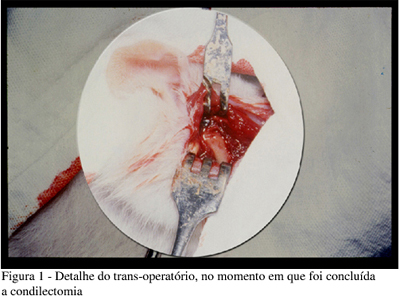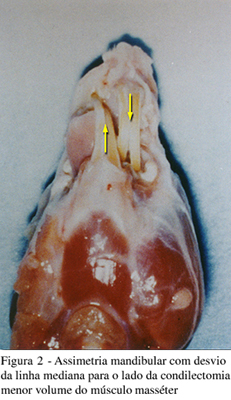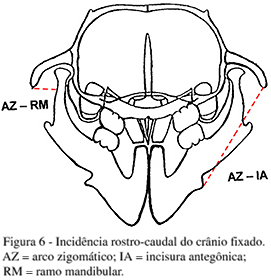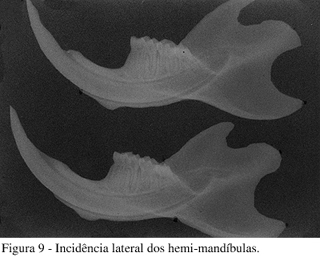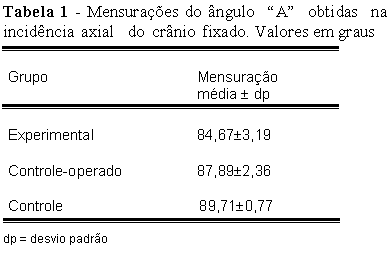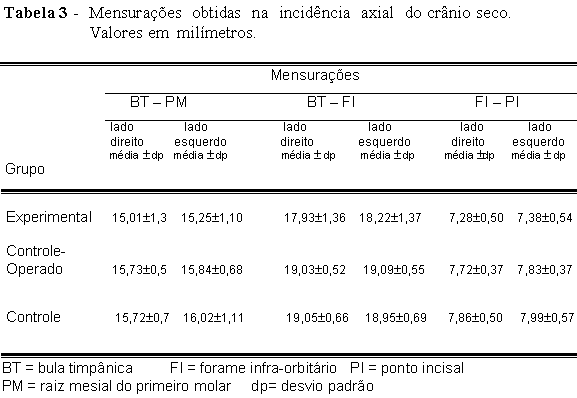Mandibular growth disturbances due to trauma to the temporomandibular joint are frequent. However, their mechanism are not completely understood. Thus, through an experimental model, it was analyzed the consequences of removal of the mandibular condyle in the growth of the maxilla and mandible. In this study 40 one-month-old Rattus norvegicus, inbred Wistar, were utilized, distributed into three groups: experimental, sham-operated and control. Under general anesthesia, in the first group the right mandibular condyle was removed, in the second a surgical access was made, and in the third no procedure was made. The animals were sacrificed with three months of age, and submitted to axial and rostro-caudal radiographs of the fixed skulls. Thus, dissection was made, and axial projection of the dried skull and a lateral projection of the hemimandibles, were obtained. With these, cephalometric mensurations were made through a computer system. The statistical analyses showed a highly significant difference for the mandibular midline deviation and to the mandibular length in the experimental group, as well as significant difference for the mandibular ramus heigh and maxillary length. It was concluded that condylectomy in the growing period promoted a significant asymmetry in the mandible, also with significant alterations in the maxillary length.
Mandibular condyle; Lifting; Maxillofacial development

